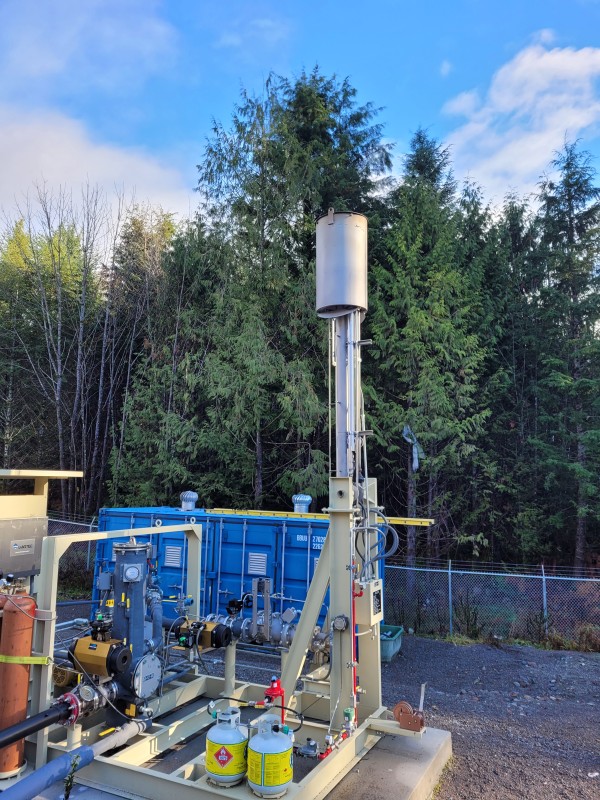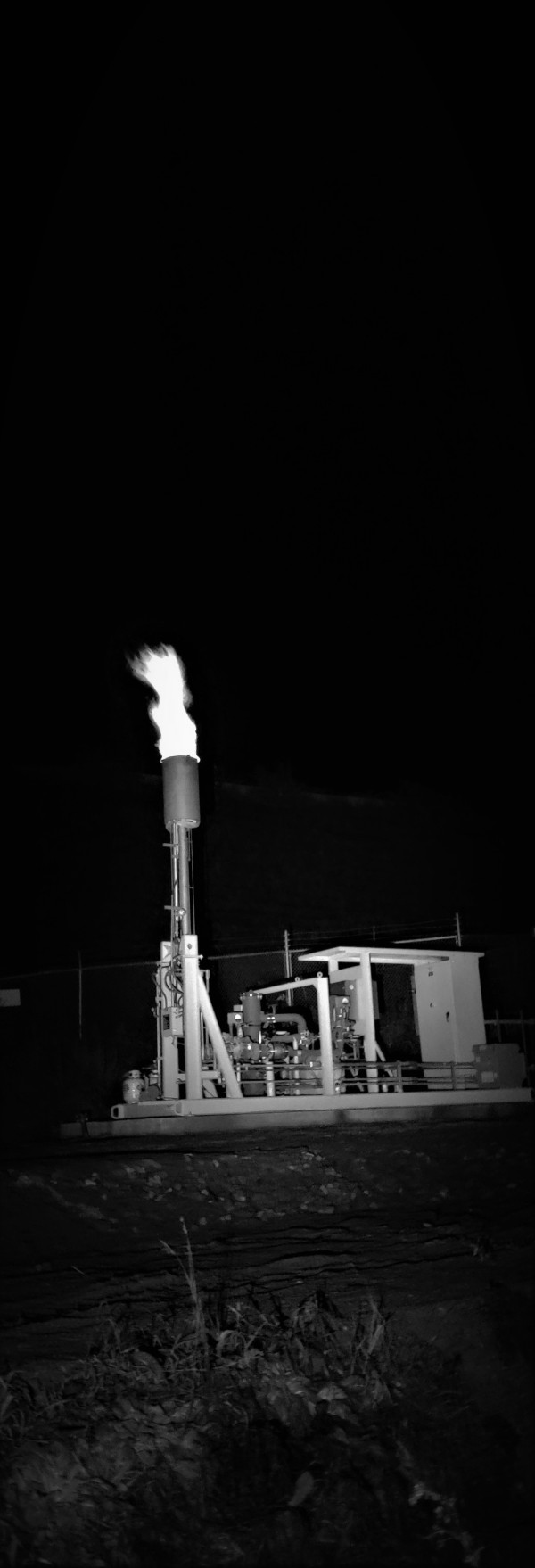District achieves active landfill gas collection system
New system aims to reduce greenhouse gas emissions through capture and flare system of landfill methane gas
The District of Squamish has recently completed and commissioned a new active landfill gas collection system and flare, located at the Squamish Landfill. The $1.5 million system funded from a combination of federal grants and borrowing, is expected to capture 75 percent of methane gas at its peak efficiency, with a 96 percent destruction rate at the flare stack. This puts Squamish 24 percent of the way toward reaching its 2030 target that would see the District of Squamish reduce emissions by 45 percent from 2010 levels, and be on track to achieve net-zero emissions by 2050.
“This is a significant step forward in our ongoing efforts and commitment to our Community Climate Action Plan,” says District of Squamish Mayor Karen Elliott. “Now that this new system has been activated, we expect to eventually see up to a 75 percent reduction in our landfill’s total greenhouse gas emissions resulting from methane. This pivotal project has accelerated Squamish’s efforts in achieving our emission-reduction goals but emitting carbon dioxide over methane is only a first step. Council and staff will be looking at alternatives to flaring as this system has the potential to support renewable gas opportunities in the future.”
Landfills are a well-known significant contributor to greenhouse gas emissions due to the release of methane, a gas that is 28 times more potent than carbon dioxide. Prior to activation of the new gas collection system, the Squamish Landfill accounted for 20 percent of local greenhouse gas emissions. The gas can now be collected through a network of vertically drilled wells and horizontal collectors which are placed throughout the landfill. The gas is then piped under vacuum to the flare station, where it is safely flared (or burned) off as carbon dioxide.
The project for now will primarily focus on destroying the methane gas. The system in the future has the potential to divert the collected methane and convert it into a usable and renewable energy source.
Completion of the project was originally intended for late 2020. Delays were encountered early in the project due to supply chain disruptions, and later the identification of required safety modifications.
While the new system is a major step for the community towards its greenhouse gas emission goals, the Zero Waste Strategy is equally as important and the District urges residents to continue diverting organic waste when possible. This simple act is still the best way to reduce methane gas production in the landfill.


December 2, 2021
